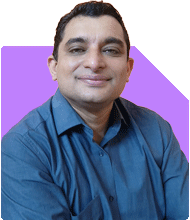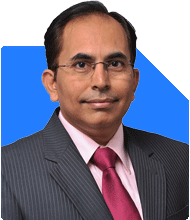Seeking financial advice: Is ELSS a good investment?
Ramalingam Kalirajan |10902 Answers |Ask -Follow
Mutual Funds, Financial Planning Expert - Answered on Aug 12, 2024
He has an MBA in finance from the University of Madras and is a certified financial planner.
He is the director and chief financial planner at Holistic Investment, a Chennai-based firm that offers financial planning and wealth management advice.... more

Hello Sir, Please note that all are direct plans, starting in 2021. please let me if any change is required. My SIP is as mentioned below Motilal elss Direct - 1500 Mirae asset ELSS -2500 Mirae asset Large and Mid Direct -2000 Parag Parekh Flexi Cap Direct -2000 DSP ELSS -1000 SBI Small Cap 1000 Quant ELSS 1000 Motilal Large and Midcap 1500 Quant small Cap 1000 Mirae asset Multicap 2000 Motilal small cap 1000 ICICI prudential Bharat 22 FOF 1000 Aditya Birla PSU 2000
Your SIP portfolio is well-diversified across various mutual fund categories. Investing in multiple funds helps reduce risk and enhances potential returns. However, it's important to review and make necessary adjustments for optimal growth.
Diversification Analysis
Diversification Across Categories
Your portfolio includes large-cap, mid-cap, small-cap, flexi-cap, and ELSS funds. This diversification is commendable. It allows you to tap into different segments of the market.
You have significant exposure to ELSS funds. While these offer tax benefits, ensure they align with your long-term goals. Too many funds in a single category might not add value.
The inclusion of flexi-cap funds like Parag Parikh Flexi Cap is wise. These funds provide flexibility by investing across market capitalizations.
Risk Management
Small-cap funds are part of your portfolio, which is good for long-term growth. However, they are more volatile. Keep a close watch and limit exposure to manage risk effectively.
The presence of large and mid-cap funds ensures stability. These funds are less volatile and can provide steady returns over time.
Direct Plans: A Closer Look
Disadvantages of Direct Plans
While direct plans offer lower expense ratios, they require active monitoring. Without expert advice, it can be challenging to make informed decisions.
Regular plans, through a Certified Financial Planner, offer guidance and regular portfolio reviews. This ensures your investments remain aligned with your financial goals.
Regular Plans Through MFD with CFP Credential
Investing through a CFP allows for ongoing professional support. A CFP can provide insights and adjustments based on market conditions and personal financial changes.
Regular plans might have higher expense ratios but offer value in terms of expert advice and management.
Suggested Adjustments
Streamlining Your ELSS Investments
You have multiple ELSS funds, which might lead to overlapping holdings. Consider consolidating to one or two well-performing ELSS funds to simplify your portfolio.
Focus on ELSS funds with a strong track record of performance and consistency.
Review Small-Cap Allocation
Small-cap funds are a high-risk, high-reward option. Ensure that your allocation does not exceed 20-25% of your total investment.
You might want to reduce the number of small-cap funds and reallocate to more stable options like large-cap or hybrid funds.
Consider Hybrid Funds
Hybrid funds, which invest in both equity and debt, can provide a balance between risk and return. They are less volatile and offer a buffer during market downturns.
Allocating a portion of your portfolio to hybrid funds can enhance stability and reduce overall risk.
Tax Efficiency and Goal Alignment
Maximizing Tax Benefits
ELSS funds offer tax deductions under Section 80C. However, ensure that your investment in ELSS is aligned with your overall tax-saving strategy.
Don't over-invest in ELSS just for tax benefits. Focus on funds that also meet your long-term financial goals.
Aligning with Financial Goals
Review your portfolio to ensure it aligns with your financial goals. Whether it's long-term wealth creation or tax savings, your investments should support your objectives.
If your goal is wealth creation, prioritize funds with strong growth potential and a proven track record.
Final Insights
Your SIP portfolio is diversified and shows a clear understanding of different market segments. However, consider streamlining your ELSS and small-cap funds to avoid redundancy. Regular plans, through a Certified Financial Planner, offer valuable guidance and management. Reassess your portfolio to ensure it aligns with your long-term goals and risk tolerance.
Best Regards,
K. Ramalingam, MBA, CFP
Chief Financial Planner
www.holisticinvestment.in
You may like to see similar questions and answers below
Omkeshwar Singh | Answer |Ask -Follow
Head, Rank MF - Answered on Dec 23, 2021
Sunil Lala | Answer |Ask -Follow
Financial Planner - Answered on Jan 09, 2024
Ramalingam Kalirajan |10902 Answers |Ask -Follow
Mutual Funds, Financial Planning Expert - Answered on May 17, 2024
Ramalingam Kalirajan |10902 Answers |Ask -Follow
Mutual Funds, Financial Planning Expert - Answered on Jul 12, 2025
Reetika Sharma |429 Answers |Ask -Follow
Financial Planner, MF and Insurance Expert - Answered on Sep 30, 2025
Anu Krishna |1749 Answers |Ask -Follow
Relationships Expert, Mind Coach - Answered on Dec 17, 2025
Anu Krishna |1749 Answers |Ask -Follow
Relationships Expert, Mind Coach - Answered on Dec 17, 2025
Radheshyam Zanwar |6748 Answers |Ask -Follow
MHT-CET, IIT-JEE, NEET-UG Expert - Answered on Dec 17, 2025
Anu Krishna |1749 Answers |Ask -Follow
Relationships Expert, Mind Coach - Answered on Dec 17, 2025
Dr Shakeeb Ahmed Khan |184 Answers |Ask -Follow
Physiotherapist - Answered on Dec 17, 2025
T S Khurana |538 Answers |Ask -Follow
Tax Expert - Answered on Dec 17, 2025
T S Khurana |538 Answers |Ask -Follow
Tax Expert - Answered on Dec 17, 2025
Janak Patel |72 Answers |Ask -Follow
MF, PF Expert - Answered on Dec 17, 2025
Ramalingam Kalirajan |10902 Answers |Ask -Follow
Mutual Funds, Financial Planning Expert - Answered on Dec 17, 2025
Samraat Jadhav |2511 Answers |Ask -Follow
Stock Market Expert - Answered on Dec 17, 2025






























